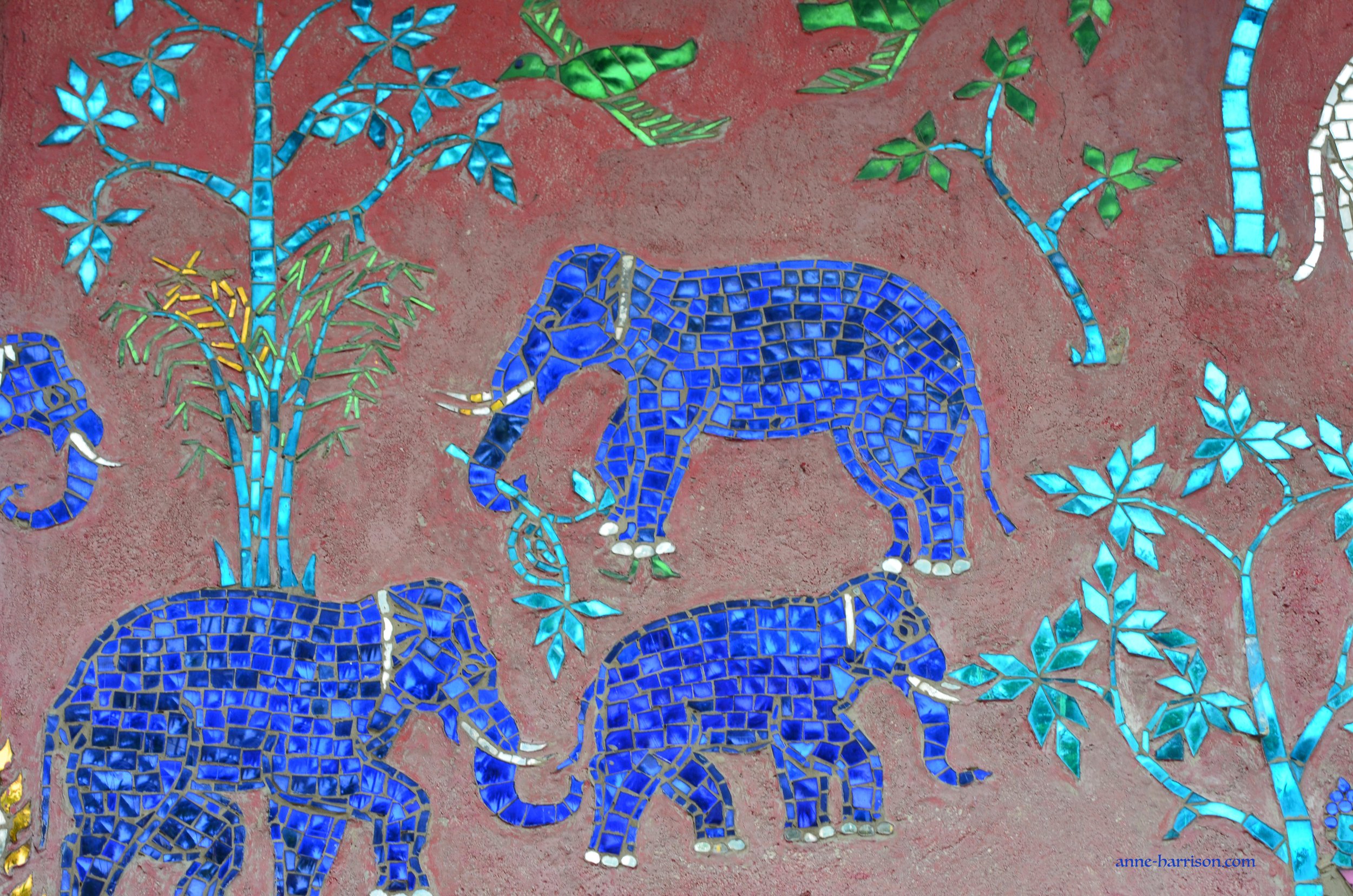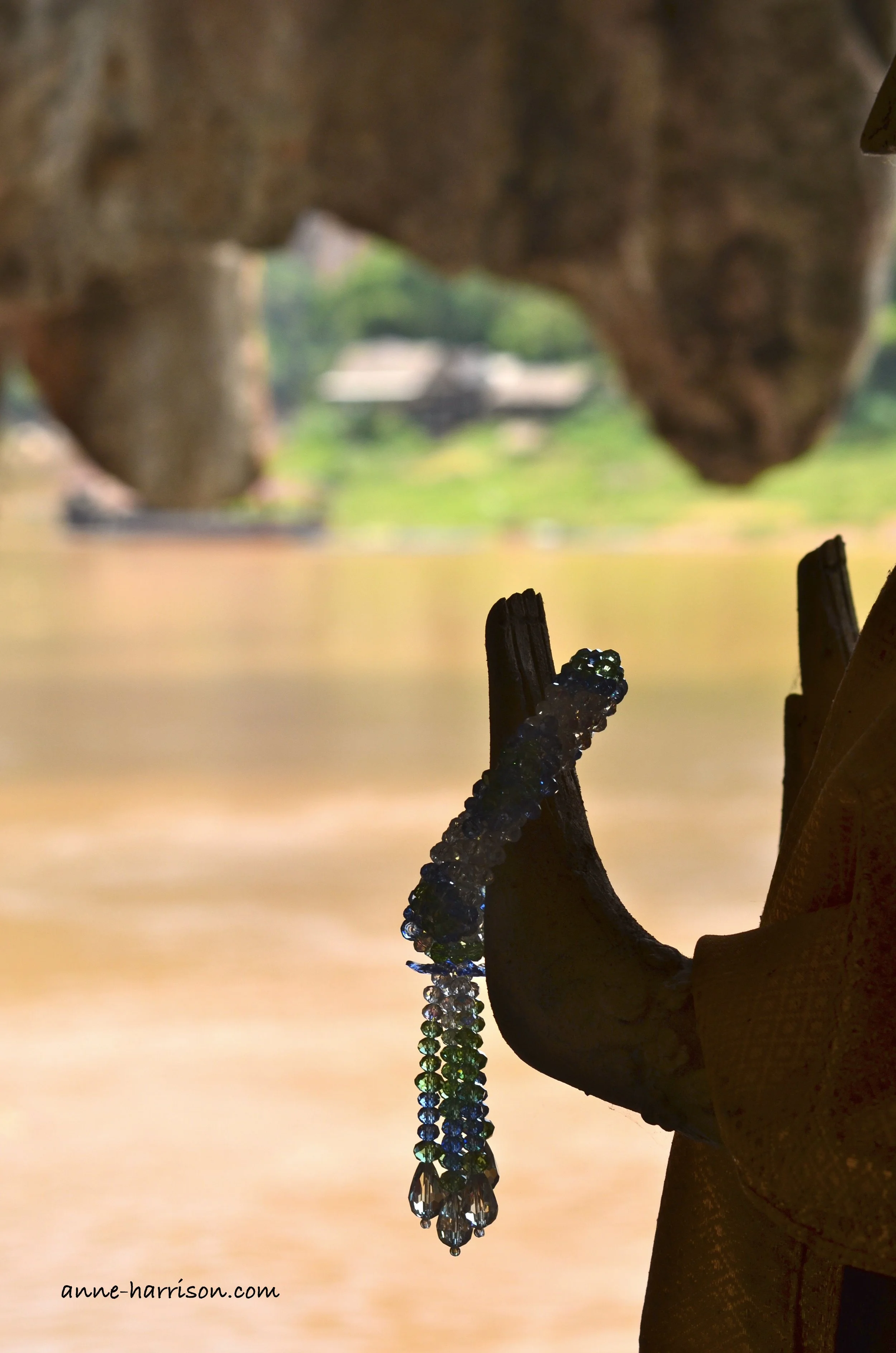Angkor’s Forgotten Temples
Statues among ruins in a temple © A. Harrison
The monks walked silently beside the moat, the reflection of their saffron robes melding with the water lilies. Aside from a woman copying ancient Khymer inscriptions into her notebook, the temple of Banteay Srei stood forgotten in the jungle.
In the darkness of the predawn, I’d stood at Angkor Wat waiting for the sun to rise. Despite the hundreds of tourists doing the same, it remains a very personal experience. By the time darkness fell later today, I sat in the back of a tuk-tuk, en route to dine at another wat. After passing much of the day clambering over jungle ruins, it was refreshing just to sit and enjoy the evening breeze as the driver zipped along the river and through the back streets of Siem Reap.
Angkor is a land of temples. The god-king Jayavarman II founded the Khmer Empire at the beginning of the 9th century AD, with Angkor as its political and religious centre. When the kingdom fell in 1432, many of those temples — or wats — which were not destroyed were simply consumed by the jungle.
Some 70 wats remain, and as I ventured ever deeper into the Cambodian jungle they became more ruined yet increasingly evocative of an almost tangible past. The ancient gods never felt far away. As recently as the 1940s, guidebooks warned of the tigers, panthers, elephants, and wild buffalo roaming the jungle — one even suggested combining a visit with a hunting expedition.
Tree roots cover everything © A. Harrison
Ta Prohm is little changed from when the French archaeologist Henri Mouhot literally stumbled across it in the early 1850s. Once home to nearly 3000 monks, it’s now a series of courtyards and rooms held together by smothering trees.
Indeed, the giant banyan trees and strangler figs are the stars of this temple, and some have their own name. The roots of the waterfall tree cascade down the wall of an inner gallery. The crocodile tree continues to spread its roots across the complex. Other trees are too numerous to name, their roots interlocking around the crumbling masonry, with young saplings springing up in any crack between the stones. Wandering along the crumbling walls, I wondered how many other wats still lie buried in the jungle, waiting to be discovered.
A haunting melody filled the air. Outside the temple, a small group of musicians sat playing traditional Cambodian instruments. More haunting still, each musician had been maimed by bombs left behind after the Vietnam war.
Despite the size of the temples they’re dwarfed by the trees © A. Harrison
A short drive from Angkor Wat is Angkor Thom. Once a walled city, (the enormous moat still survives) in the 11th century Angkor Thom had a population of some one million—at a time when the population of London was around 15,000.
Swamped by the tropical heat, I was more than happy to be lazy and let my guide drive me to various spots on the enormous grounds. Others explore via pushbike, and it’s not uncommon to see the occasional elephant taking visitors for a ride, stepping delicately amongst the picnickers scattered amongst the grounds.
Within the walls of Angkor Thom is the Terrace of the Leper King, so named for the headless statue once thought to be the image of King Jayavarman VII, who suffered from leprosy. The walls of the terrace are covered with exquisitely carved bas-reliefs. Amongst the flowing figures are celestial kings and underworld deities, warriors, dancing women, and a host of mythical creatures including multiple-headed naga.
Connecting to the Terrace of The Leper is the Terrace of Elephants, built for the king to use for viewing parades and performances. Almost life-size carvings of elephants with their mahouts cover the walls (as well as more bas-reliefs of deities, tigers and snakes, just to name a few).
In the centre of Angkor Thom stands the Banyon. This pyramid-shaped temple has some 54 towers bearing over 200 huge stone faces, yet these seem almost insignificant when compared with the four massive faces smiling enigmatically from the central towers. Carved with the features of Jayavarman VII, they are thought to personify the all-seeing all-knowing Bodhisattva Avalokitesvara. Once more the walls are covered with exquisite bas-reliefs, where scenes from everyday 12th-century life mingle with those of legend.
Back at Banteay Srei, the rain started with a thunderclap, and plummeted from the sky. Soon endless raindrops danced across the moat. The reflection of the temple shimmered amongst the water lilies, dotted with the orange robes of the few monks who stayed out in the rain. Meanwhile, I stood trapped amongst the pink sandstone corridors as the heavens continued their deluge. Built in the late 10th century, Banteay Srei—or the Citadel of Beauty—is the only complex in Angkor built from pink sandstone. Aside from the magical colour, this has allowed the exquisite detail of the carvings to survive, and many consider them the finest in Cambodia.
A young monk laughed as he scurried past me. Barely a teenager, he knew full well that tropical storms come and go, and life goes on. For me, however, the real world seemed very far away.
Old fashioned transport © A. Harrison
Enjoy my writing? Please subscribe here to follow my blog. Or perhaps you’d like to buy me a coffee? (Or a pony?)
If you like my photos please click either here or on the link in my header to buy (or simply browse) my photos. Or else, please click here to buy either my poetry or novel ebooks. I even have a YouTube channel. Thank you!
Some of my other blogs you may enjoy:














Luang Prabang is a place of cobbled streets and quiet cafes overlooking the Mekong. The (somewhat faded) French colonial charm provides a counterpoint to the old wooden buildings and the innumerable wats, or temples. Every dawn, the monks leave these wats to partake of Tak Bat, a silent offering of food by the locals.